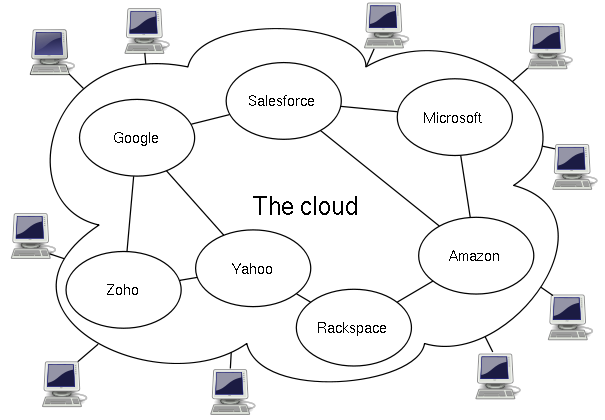Cloud Computing
Future of Innovation Main Page
Cloud computing is Internet-based computing, whereby shared resources, software, and information are provided to computers and other devices on demand, like the electricity grid.

In general, cloud computing customers do not own the physical infrastructure, instead avoiding capital expenditure by renting usage from a third-party provider. They consume resources as a service and pay only for resources that they use. Many cloud-computing offerings employ the utility computing model, which is analogous to how traditional utility services (such as electricity) are consumed, whereas others bill on a subscription basis. Sharing "perishable and intangible" computing power among multiple tenants can improve utilization rates, as servers are not unnecessarily left idle (which can reduce costs significantly while increasing the speed of application development). A side-effect of this approach is that overall computer usage rises dramatically, as customers do not have to engineer for peak load limits. In addition, "increased high-speed bandwidth" makes it possible to receive the same response times from centralized infrastructure at other sites.
Most cloud providers expose APIs which are typically well-documented (often under a Creative Commons license) but also unique to their implementation and thus not interoperable. Some vendors have adopted others' APIs and there are a number of open standards under development, including the OGF's Open Cloud Computing Interface. The Open Cloud Consortium (OCC) is working to develop consensus on early cloud computing standards and practices.
The Intercoud
The Intercloud is an interconnected global "cloud of clouds" and an extension of the Internet "network of networks" on which it is based. The term was first used in the context of cloud computing in 2007 when Kevin Kelly stated that "eventually we'll have the intercloud, the cloud of clouds. This Intercloud will have the dimensions of one machine comprising all servers and attendant cloudbooks on the planet."It became popular in 2009 and has also been used to describe the datacenter of the future.
The Intercloud scenario is based on the key concept that each single cloud does not have infinite physical resources. If a cloud saturates the computational and storage resources of its virtualization infrastructure, it could not be able to satisfy further requests for service allocations sent from its clients. The Intercloud scenario aims to address such situation, and in theory, each cloud can use the computational and storage resources of the virtualization infrastructures of other clouds. Such form of pay-for-use may introduce new business opportunities among cloud providers if they manage to go beyond theoretical framework.
The concept of a competitive utility computing market which combined many computer utilities together was originally described by Douglas Parkhill in his 1966 book, the "Challenge of the Computer Utility".